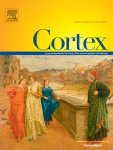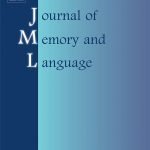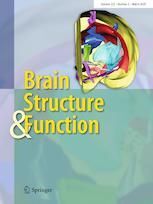TMS-Lab
TMS Laboratory
Laboratory manager
Team
Alumni
Dr. Géza Gergely Ambrus
Charlotta Eick (Msc)
Antonia Eisele (MSc, 2018)
Ricarda Budny (MSc, 2018)
Maria Dotzer (MSc, 2016)
Anna B-C. Trimborn (BSc, 2017)
Fabienne Windel (BSc, 2017)
Laura Krohn (BSc, 2017)
Lisa Röhrig (Intern, 2017)
-
Inhibition of the occipital face area modulates the electrophysiological signals of face familiarity: a combined cTBS-EEG study
Buchcover CortexCover
Foto: BPCNInhibition of the occipital face area modulates the electrophysiological signals of face familiarity: a combined cTBS-EEG study
Charlotta Eick, Géza Gergely Ambrus, Gyula Kovács
Cortex, Volume 141, August 2021, Pages 156-167We used an offline, inhibitory continuous theta-burst stimulation (cTBS) protocol over the right OFA and the vertex as control site. Electroencephalographic (EEG) recording of event-related potentials (ERPs), elicited by visually presented familiar (famous) and unfamiliar faces was performed before and after stimulation. We observed a difference in ERPs for famous and unfamiliar faces in a time-window corresponding to the N250 component. Importantly, this difference was significantly increased by cTBS of the right OFA, suggesting its causal role in the differential processing of familiar and unfamiliar faces. The enhancement occurred focally, at electrodes close to the right hemispheric cTBS site, as well as over similar occipito-temporal sites of the contralateral hemisphere.
-
When less is more: enhanced statistical learning of non-adjacent dependencies after disruption of bilateral DLPFC
JML Cover
Foto: BPCNGéza Gergely Ambrus, Karolina Janacsek, Anna B. C. Trimborn, Gyula Kovács, Dezső Németh
Journal of Memory and Language, Volume 114, October 2020, 104144The aim of the present study was to test the causal role of the dorsolateral prefrontal cortex (DLPFC) in implicit statistical learning of non-adjacent dependencies. We applied 1 Hz inhibitory transcranial magnetic stimulation or sham stimulation over both the left and right DLPFC intermittently during the learning. The DLPFC stimulation group showed better performance compared to the sham group after a 24-hour consolidation period. This finding suggests that the disruption of DLPFC induced qualitative changes in picking up non-adjacent statistical regularities during learning, which support the less-is-more hypothesis.
-
The occipital face area is causally involved in identity-related visual-semantic associations
Cover
Foto: LinkCharlotta Eick, Gyula Kovács, Sophie-Marie Rostalski, Lisa Röhrig, Géza Gergely Ambrus
Brain Structure and Function Volume 225, June 2020, Pages 1483–1493.We applied an identity-learning task where unfamiliar faces were presented together with a name and a job title in the first encoding phase. Simultaneously, TMS pulses were applied either to the left or right OFA or to Cz, as a control. In the subsequent retrieval phase, the previously seen faces were presented either with two names or with two job titles and the task of the participants was to select the semantic information previously learned. We found that the stimulation of the right or left OFA reduced subsequent retrieval performance for the face-associated job titles. This suggests a causal role of the OFA in the association of faces and related semantic information. Furthermore, in contrast to prior findings, we did not observe hemispherical differences of the TMS intervention, suggesting a similar role of the left and right OFAs in the formation of the visual- semantic associations. Our results suggest the necessity to reconsider the hierarchical face-perception models and support the distributed and recurrent models.
-
TMS of the occipital face area modulates cross-domain identity priming
Cover
Foto: LinkGéza Gergely Ambrus, Catarina Amado, Laura Krohn, Gyula Kovács
Brain Structure and Function Volume 224, Issue 1, pp 149–157, January 2019To test if the OFA is sensitive to sematic information we implemented a cross-domain, name-face priming paradigm in a state-dependent TMS study. Volunteers performed a familiarity decision task for target face images preceded by primes that were congruent, incongruent or the character string 'XXXXX'. TMS of the rOFA reduced the behavioral disadvantage of incongruent primes, while performance in the congruent and no prime conditions remained intact. This suggests the existence of neural populations in the rOFA that take part in the semantic processing of identity, probably in interplay with other nodes in the extended face network.
-
The occipital face area is causally involved in the formation of identity specific face representations
Cover
Foto: LinkGéza Gergely Ambrus, Maria Dotzer, Stefan R. Schweinberger, Gyula Kovács
Brain Structure and Function
Volume 222, Issue 9, December 2017, Pages 4271-4282We combined a priming paradigm with TMS, using photographs of familiar and unfamiliar faces in a design that was aimed at assessing image-specific and image-independent representations in the rOFA. Our study is the first to demonstrate image-independent identity processing in the rOFA in healthy human participants. In addition, our study also demonstrates the potential of state-dependent brain stimulation techniques as an effective tool to gain a finer-grained understanding of cortical functions where more conventional virtual lesion techniques are insufficient.
-
Causal evidence of the involvement of the right occipital face area in face-identity acquisition
Cover
Foto: LinkGéza Gergely Ambrus, Fabienne Windel, A. Mike Burton, Gyula Kovács
NeuroImage Volume 148, 1 March 2017, Pages 212–218We have shown that disrupting the functions of the rOFA by TMS during a training phase abolishes identity information acquisition, thereby, for the first time we have demonstrated that the rOFA plays a causal role in the formation of image-independent representations for facial identities. These findings indicate that the rOFA is involved in identity learning from multiple instances and in the creation of identity-dependent memory traces.
-
Causal evidence of the involvement of the number form area in the visual detection of numbers and letters
Mareike Grotheer, Géza Gergely Ambrus, Gyula Kovács
NeuroImage Volume 132, 15 May 2016, Pages 314-319Double pulse TMS targeted at the right NFA significantly impaired the detection of briefly presented and masked Arabic numbers in comparison to vertex stimulation. This suggests the NFA to be necessary for fluent number processing. Surprisingly, TMS of the NFA also impaired the detection of Roman letters. On the other hand, stimulation of the lateral occipital complex (LO) had neither an effect on the detection of numbers nor on letters. Our results show forthe first time, that the NFA is causally involved in the early visual processing of numbers as well as of letters.



